| Photojournal
- 22 April
2005
A
short walk after work
|
The 22nd was a Friday,
a weekday, and that meant that any photography that I got in would
have to be outside working hours. I had planned ahead and had
my camera with me, so after work I stopped by Glenbrook Ravine,
a small park in New Westminster. At the main entrance to this
park, there's a senior's community center, a little pond, and
a flower garden. I decided to see if there were any good flowers
to be found.
While looking around
at the flowers, the first thing that I noticed was a fly that
had landed on some little yellow ones (old pansies, I believe).
I quickly focussed and took a few shots of him, even though I
had my big supertelephoto lens on the camera. The supertelephoto
can get some decent close-ups, but I have a macro lens that does
a much better job on the little critters.
The metallic blue-green
of this fly leads me to believe that it is some sort of Bottle
Fly, but I don't know which kind. (Bottle flies are also known
as Blow flies.) My first guess would be that this is a Caesar
Green Bottle Fly, mainly because they're the most common ones
out this way. However, this fly's thoracic segments seem to me
to be proportioned differently than most of the Caesar Green photos
I've seen. So maybe he's Caesar, and maybe not.
|
|
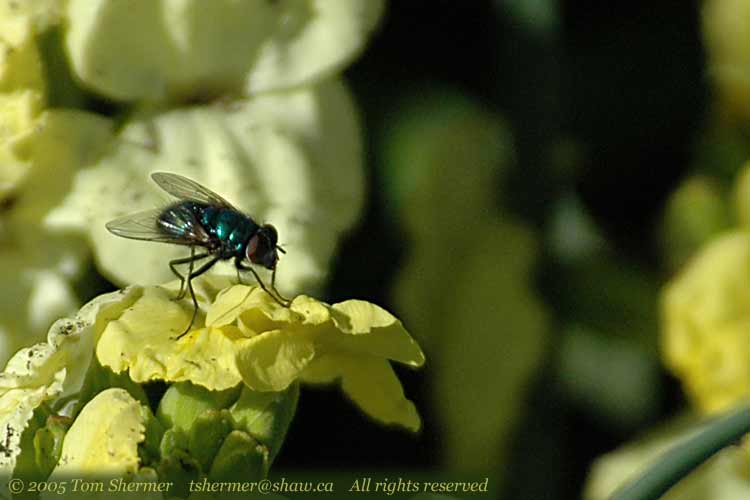 |
| None of
the flowers were looking particularly healthy, but I took photos
of several different ones anyway. Here's one that had small five-fold
flowers, like forget-me-nots, except that the shape of the petals
is different. Maybe one of you readers out there will let me know
what it is—I spent a little bit of time searching for its name,
but came up empty. |
|
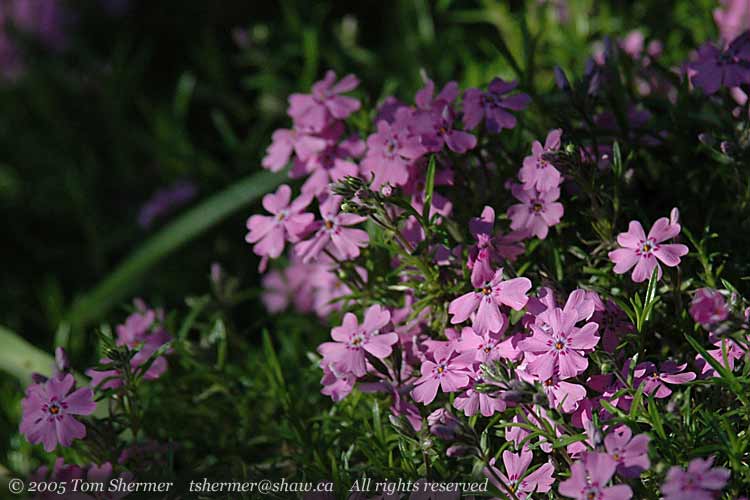 |
|
This next one I think
is a pansy (a.k.a. Viola), but again I'm not certain. I haven't
been paying attention to flowers for very long, and learning flower
identification is pretty tough. Especially with all those horticulturists
out there breeding new varieties all of the time.
This one isn't a new
variety, though, I've seen it around for quite a long time.
|
|
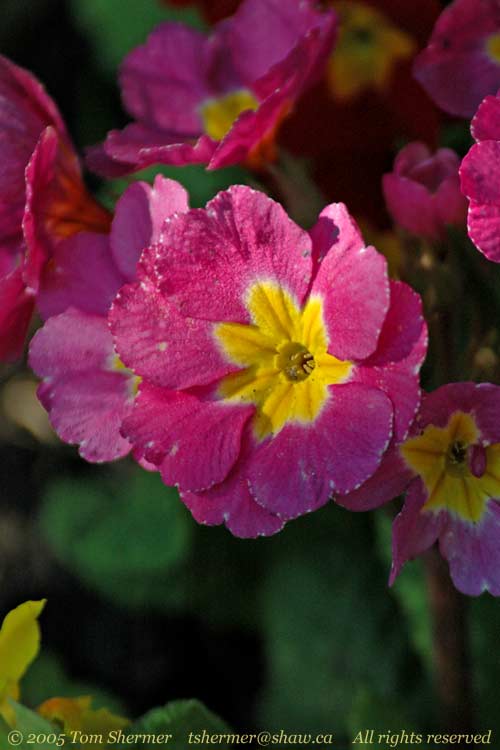 |
| This one,
on the other hand, I'm fairly certain is a pansy. |
|
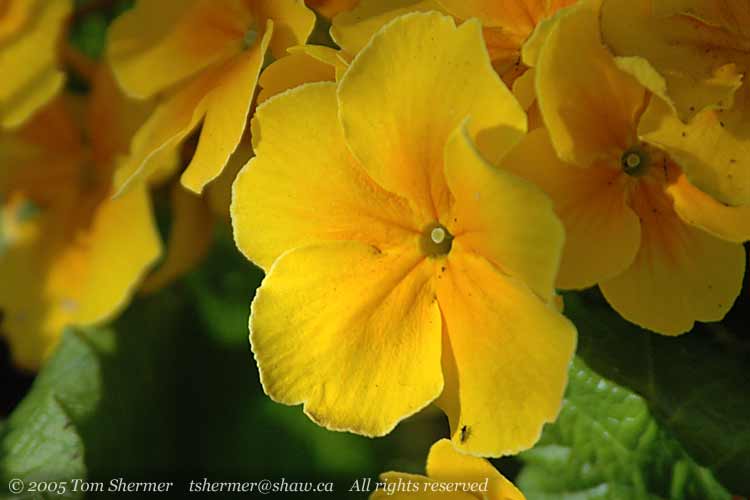 |
| And this
looks to be an Aster of some sort. |
|
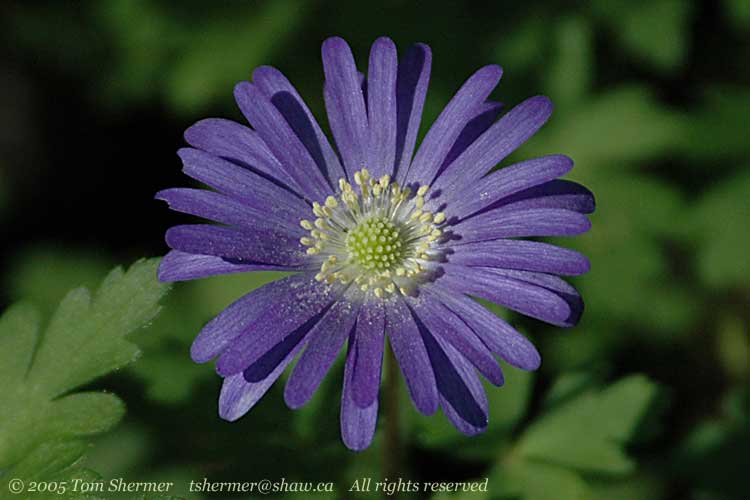 |
| A few more
bugs amongst the flowers caught my eye. The first was this Giant
Western Crane Fly, a proud member of the species that boasts that
they're the largests flies west of the Rockies. |
|
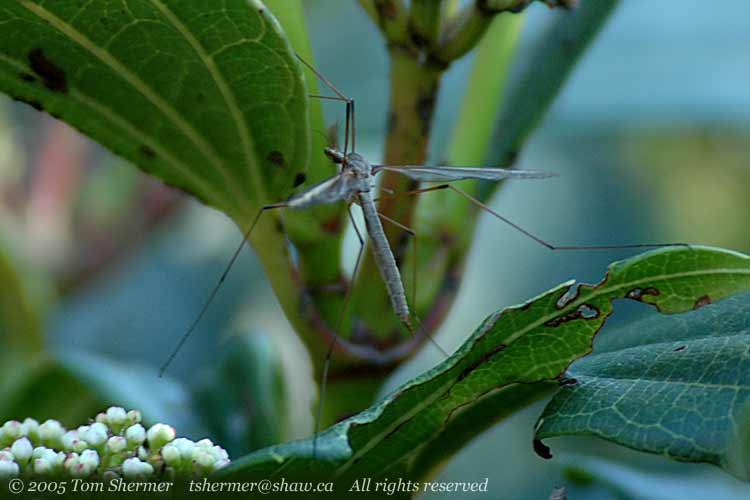 |
|
Frankly, I don't see
that as much of a big deal, but don't tell the crane fly that.
The following smaller
guy was also buzzing around. Although at first glance he looks
like a honeybee, the relatively short hair on the thorax and lack
of a "waist" between the thorax and abdomen lead me
to conclude that he is a Drone Fly. A Drone Fly is a type of fly
that makes its living imitating honeybees.
And I'm pretty sure
that the flowers he's on are actual forget-me-nots. The latin
name for forget-me-nots is Myosotis, which means "mouse's
ear". That name refers to the shape of the petals on the
flower; they have a little point on the end of them. And the petals
on these flowers do indeed have have little points on their tips,
although there are only a couple of petals in the photo on which
this is very clear.
|
|
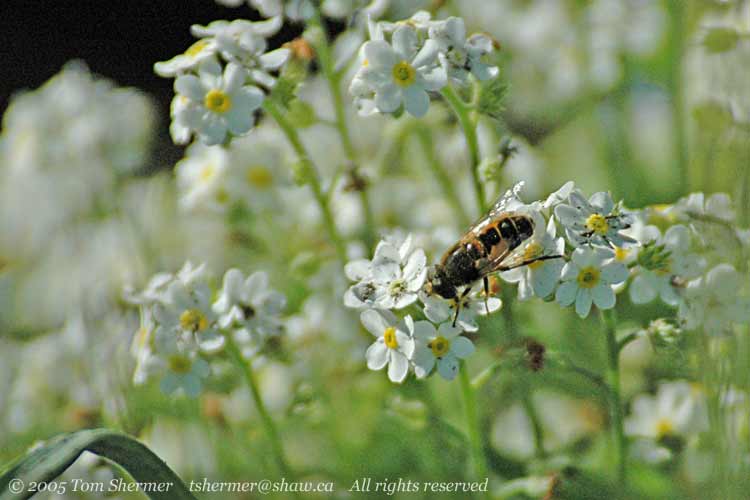 |
|
The next interesting
flower I found, shown below, is probably some type of Doronicum,
more commonly known as Leopard's Bane.
|
|
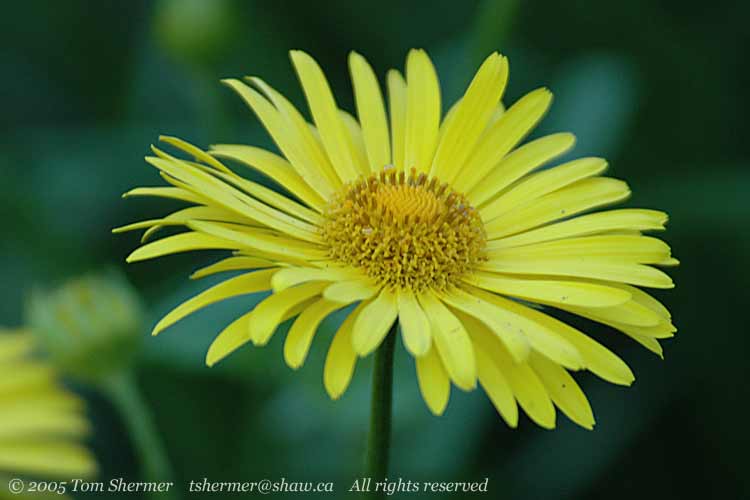 |
|
And the following one
is certainly a Trillium; it is most probably Trillium grandiflorum,
also known as Snow Trillium or Wake-Robin. I think that Wake-Robin
is quite an appropriate name for them, because I've never seen
a sleeping robin anywhere near one. Hmmmm...maybe they should
be called Wake-Elephant.
|
|
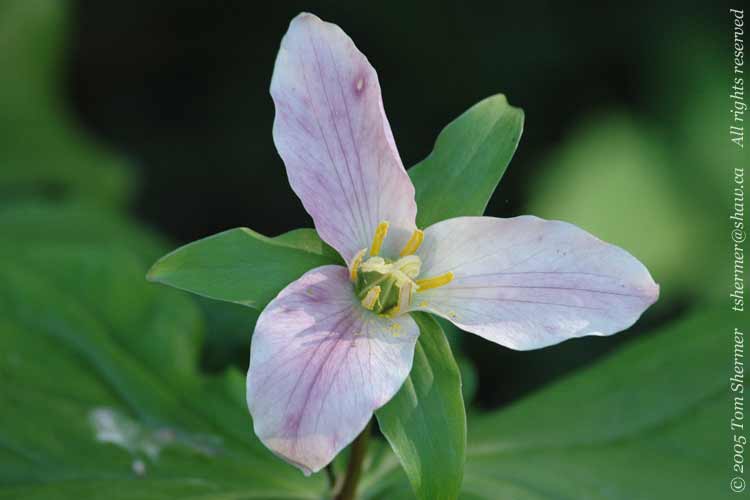 |
|
There are several native
Trillium species here in B.C., and I've seen Trillium flowers
much like the one above when I've been roaming out in the woods.
This next flower is
another mystery to me; I've looked quite hard for its name. Help
me out on it if you can.
|
|
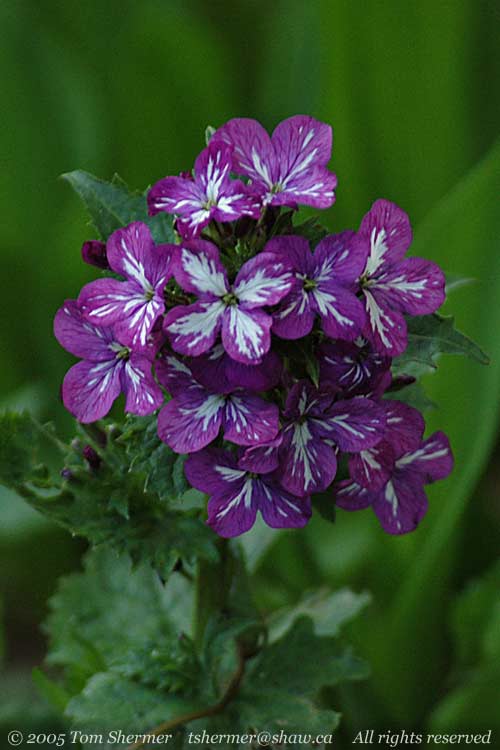 |
|
It's very pretty, though;
I love the color and patterns.
This pretty much finished
the flowers near the entrance to the park, and I continued on,
walking the length of the ravine, to look for birds.
I didn't see too many
birds, but I did encounter a few butterflies. This one is a Cabbage
White.
|
|
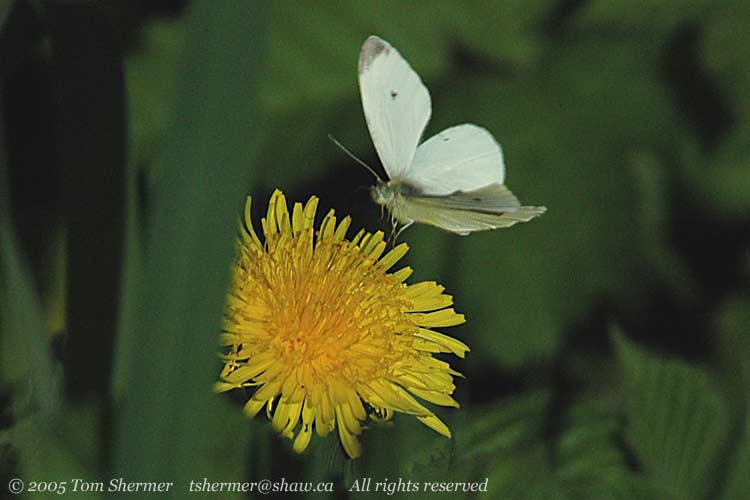 |
| And this
one, with the differently-colored wing veins, is a Mustard White.
There seemed to be something about white butterflies and dandelions
that day.. Maybe the dandelions were putting off good butterfly
food. |
|
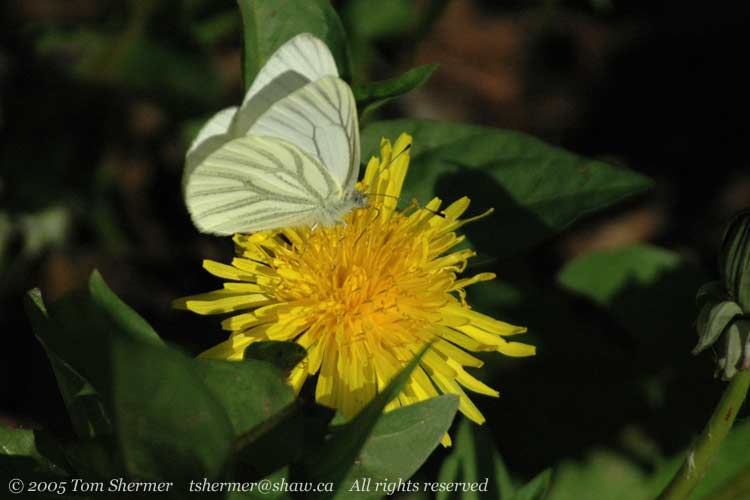 |
| The other
butterfly I found was this orange beauty, which is called a Green
Comma, for reasons that elude me. |
|
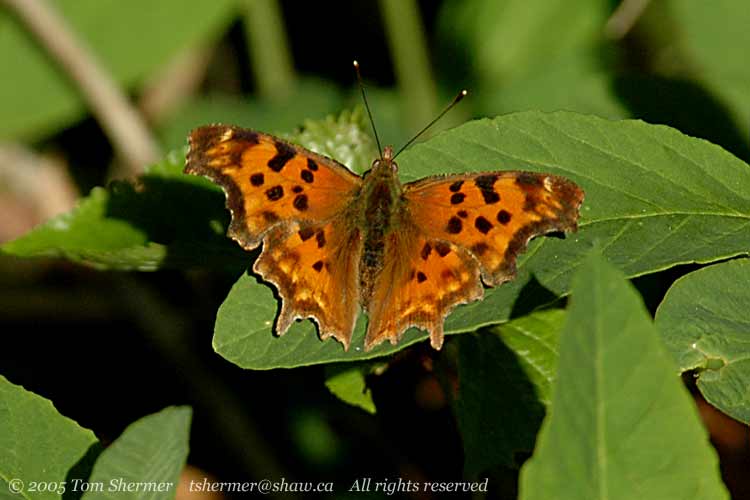 |
| Finally,
at the top of the ravine, I did find a few birds, but nothing special.
There were a couple of Song Sparrows, House Finches, and a Spotted
Towhee in the trees. Here's a House Finch who, like me, was just
hanging out enjoying the day. |
|
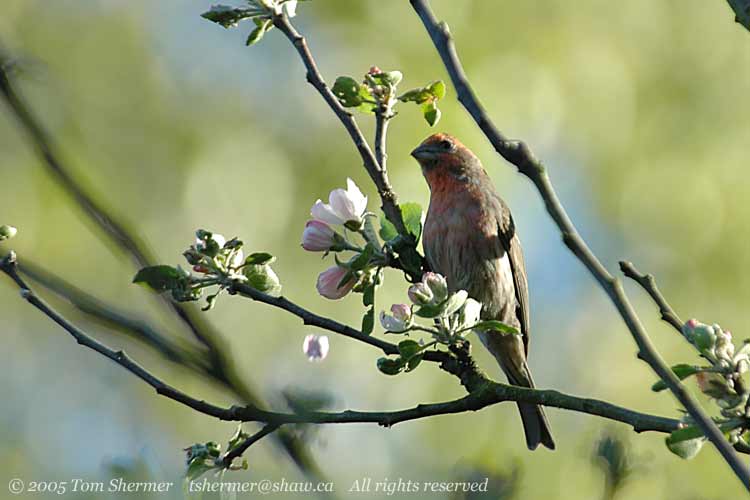 |
| I entered
an alley just outside the top of the park and walked along it a
ways. A small flock of European Starlings was foraging in the area.
One of them lit upon a very tall aerial that was on one of the houses
that backed onto the alley, and I caught a shot of him there. |
|
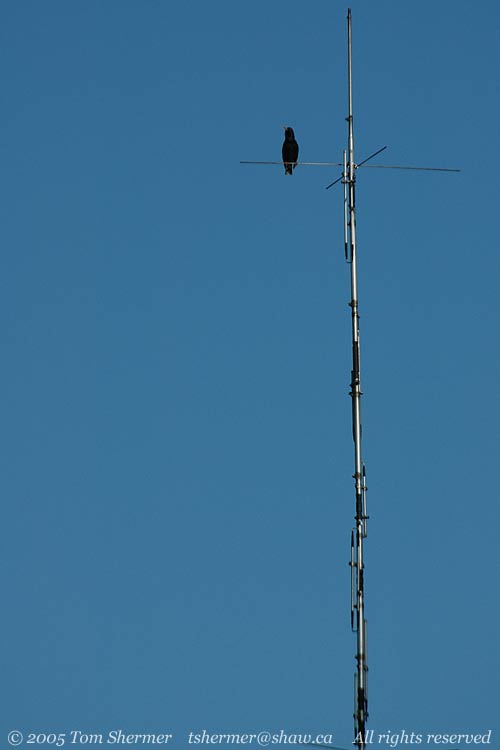 |
|
I think that the juxtaposition
of the bird and the aerial made that quite an interesting photo.
But then again, that's just me, and everyone is entitled to their
opinion.
On my way back down
the ravine, I really didn't encounter anything, except the same
types of butterflies that I had already seen. I headed home thinking
about how to find flowers that weren't as weatherbeaten or old
as some of the ones that I had just seen.
On Sunday I would find
some; they will be coming your way in the next installment.
Communing with the
finches,
Tom
|
|
|